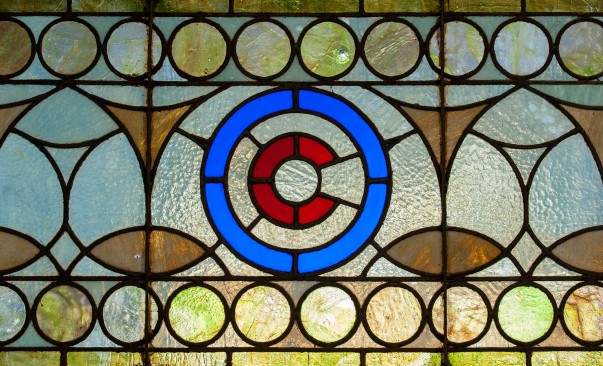
By John Tielsch, Class of 2015
Soon we’ll begin recruiting experienced docents to bolster the docent core for one of CAC’s most popular tours: Historic Treasures of Chicago’s Golden Age. The tour examines a dozen of Chicago’s most important and iconic buildings built on two of its most famous streets, Michigan Avenue and State Street. In addition to building descriptions and the prominent architects who designed them, the tour includes some of the “movers and shakers” who commissioned their construction. In addition, there are some the characters whose stories are important in understanding this era’s buildings.
Rabbi Emil Hirsch: Was a social reformer, professor of rabbinical literature and philosophy at the University of Chicago, member of the Library Board from 1885-1897, and its former president. After years of effort by Hirsch, the Board and others, Chicago finally opened its first permanent library in 1897, now the Cultural Center. In his speech at the library dedication, Rabbi Hirsch said “We have for years been like the ancient people of Egypt, wandering about in search of a home: at last we have reached the promised land and here we intend to remain.”
Teddy Roosevelt: As President he created the Pelican Island National Wildlife Refuge in 1903, the first wildlife refuge in the U.S. This act was spurred by alarm over the decimation of the wild bird population; bird plumage used to adorn lady’s hats manufactured by, among others, the occupants of the Gage Group at 18-30 South Michigan Avenue.
Jane Addams: Co-founder of Hull House, a refuge for poor immigrant families, she received the Noble Peace Prize in 1931. One of several luxury hotels that occupied the former Carbide and Carbon Building, which her Hull House families could never have entered, was once named for her!
Louis Millet: An interior designer who attended The Ecole des Beaux Arts in Paris, as did several of the architects who designed buildings on this tour. A master of stained glass, his work on the dome for the Grand Army of the Republic Hall in the Cultural Center is being restored and will be one of the highlights of this tour when completed.
Richard Bock: Trained as a sculptor at the Ecole des Beaux Arts. He created sculptural designs for two buildings at the 1893 World’s Fair, the Mining and the Electricity Exhibition Halls. While studying with Louis Sullivan, he met Frank Lloyd Wright and created bas-reliefs for Sullivan’s Schiller Building, demolished in 1962. He completed other works for Frank Lloyd Wright, including the Dana-Thomas House, Unity Temple, and the Larkin Administration Building.
Pudge Heffelfinger and William Wrigley: The Chicago Athletic Association (CAA) was housed in what is now a hotel of the same name on this tour. Pudge was an All-American football player at Yale and played for the formidable CAA team after graduation. He was “recruited” away from the CAA by the Allegheny Athletic Association that paid him $500 to play for them, thus becoming the first “professional” football player, to the outrage of all the respectable amateur men’s club teams.
William Wrigley, whose name is on the first building on the tour, was also a member of the CAA. He later bought his own pro-sports team, the Chicago Cubs. He borrowed the red “C” insignia of the CAA to adorn the uniforms of his new team. It’s still on those uniforms today.
Richard Nickel: A young photographer and Louis Sullivan fan, he worked tirelessly with architect John Vinci and cultural historian Tim Samuelson to document many of Sullivan’s great Chicago works by photographing them and salvaging building ornament before they were demolished. One of the first to advocate for historic preservation, he died in 1972 in the collapse of Sullivan’s Board of Trade Building while on a salvage mission. Without Nickel, and his followers, I believe that some of the buildings on this tour might not be standing today for us to enjoy.

















Thanks, John. A nice compendium of facts about non-architects who really made a difference. I loved it.
Thanks for sharing this information.
Thank you for your great collection of photos and stories! I appreciate the information.
I really enjoyed this article, John! The people and stories connected to buildings on this tour. are fascinating. Thanks for sharing them.
Thank you for highlighting the contributions of “The Others”, folks whe weren’t center stage but always in the wings to do whatever had to be done. Very enlightening!
Thanks, Terrific article about “The Others”
Nice article! Wish I’d had the Emil Hirsch quote for my CPL presentation last month!